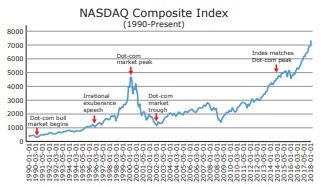E-Commerce - The Development and Growth of Electronic Commerce | 12th Computer Applications : Chapter 15 : E-Commerce
Chapter: 12th Computer Applications : Chapter 15 : E-Commerce
The Development and Growth of Electronic Commerce
The Development and Growth of Electronic Commerce
Economists
describe four distinct waves (or phases) that occurred in the Industrial
Revolution. In each wave, different business strategies were successful.
Electronic commerce and the information revolution brought about by the
Internet likely go through such series of waves. Refer Figure 15.5

The First Wave of Electronic Commerce: 1995 -2003
The Dotcom companies of first wave are mostly American
companies. Thereby their websites were only in English. The Dotcom bubble had
attracted huge investments to first wave companies.
As the
Internet was mere read-only web (web 1.0) and network technology was in its
beginning stage, the bandwidth and network security was very low. Only EDI and
unstructured E-mail remained as a mode of information exchange between
businesses. But the first wave companies enjoyed the first-move advantage and
customers were left with no option.
The Second Wave of Electronic Commerce: 2004 – 2009
The second wave is the rebirth of E-Commerce after
the dotcom burst. The second wave is considered as the global wave, with
sellers doing business in many countries and in many languages. Language
translation and currency conversion were focused in the second wave websites.
The second wave companies used their own internal funds and gradually expanded
their E-Commerce opportunities. As a result E-Commerce growth was slow and
steady. The rapid development of network technologies and interactive web (web
2.0, a period of social media) offered the consumers more choices of buying.
The increased web users nourished E-Commerce companies (mostly B2C companies)
during the second wave.
The Third Wave of Electronic Commerce: 2010 – Present
The third wave is brought on by the mobile
technologies. It connects users for real-time and on-demand transactions via
mobile technologies. The term Web 3.0, summarize the various characteristics of
the future Internet which include Artificial Intelligence, Semantic Web,
Generic Database etc.
Dotcom Bubble
The Dotcom Bubble was a historic
excessive growth (excessive assumption) of economy that occurred roughly
between 1995 and 2000. It was also a period of extreme growth in the usage and
adaptation of the Internet as well.
In the late 1995, there was a
tremendous development in US equity investments in Internet-based companies.
During the dotcom bubble, the value of equity markets grew exponentially with
the NASDAQ composite index of US stock market rising from under 1000 points to
more than 5000 points.
NASDAQ Composite Index
(1990-Present)

Dotcom Burst
The Nasdaq-Composite stock market
index, fell from 5046.86 to 1114.11. This is infamously, known as the Dotcom
Crash or Dotcom Burst. This began on March 11, 2000 and lasted until October 9,
2002. During the crash, thousands of online shopping companies, like as
Pets.com failed and shut down. Some companies like Cisco, lost a large portion
of their market capitalization but survived, and some companies, like Amazon
declined in value but recovered quickly.
Related Topics